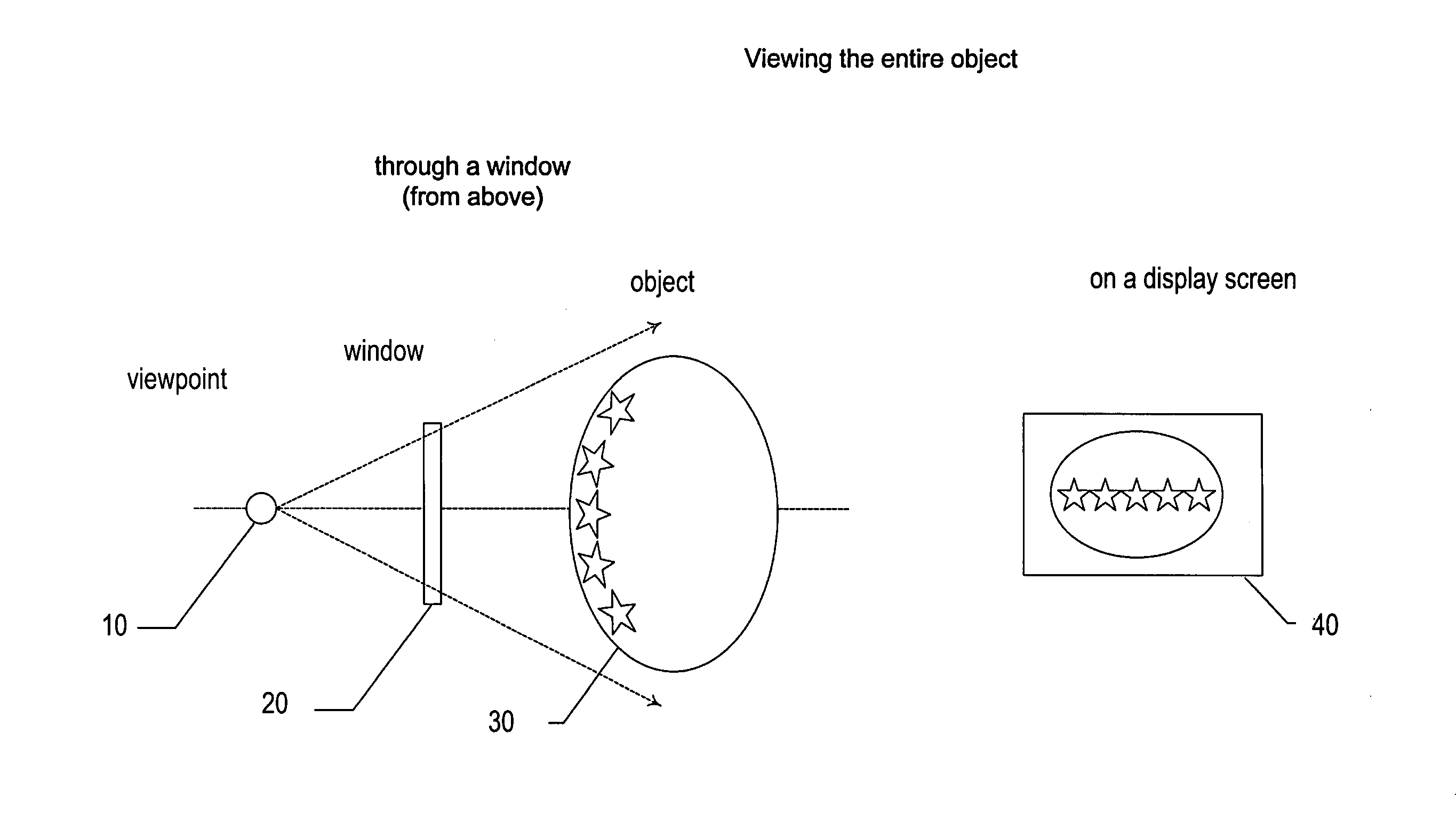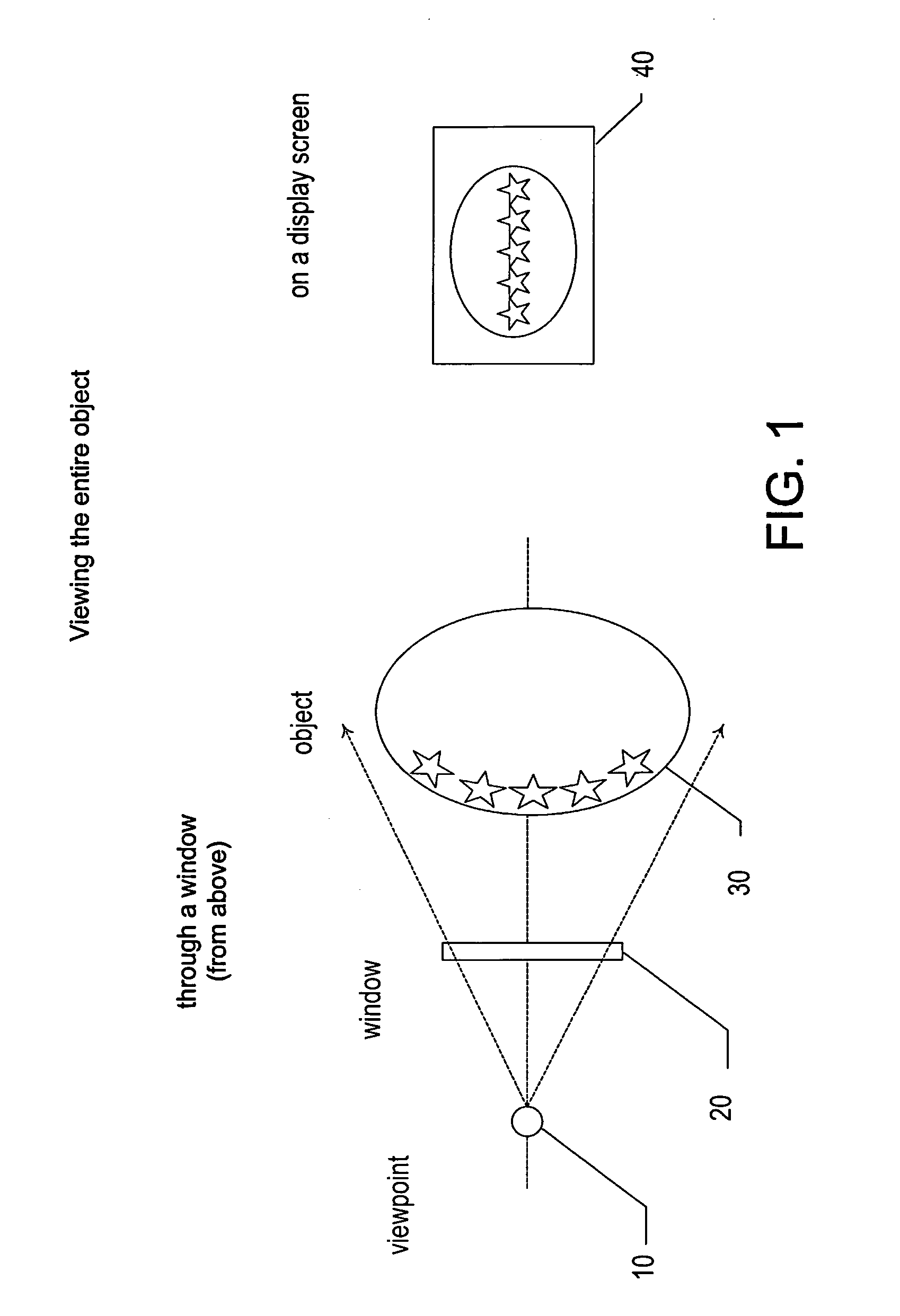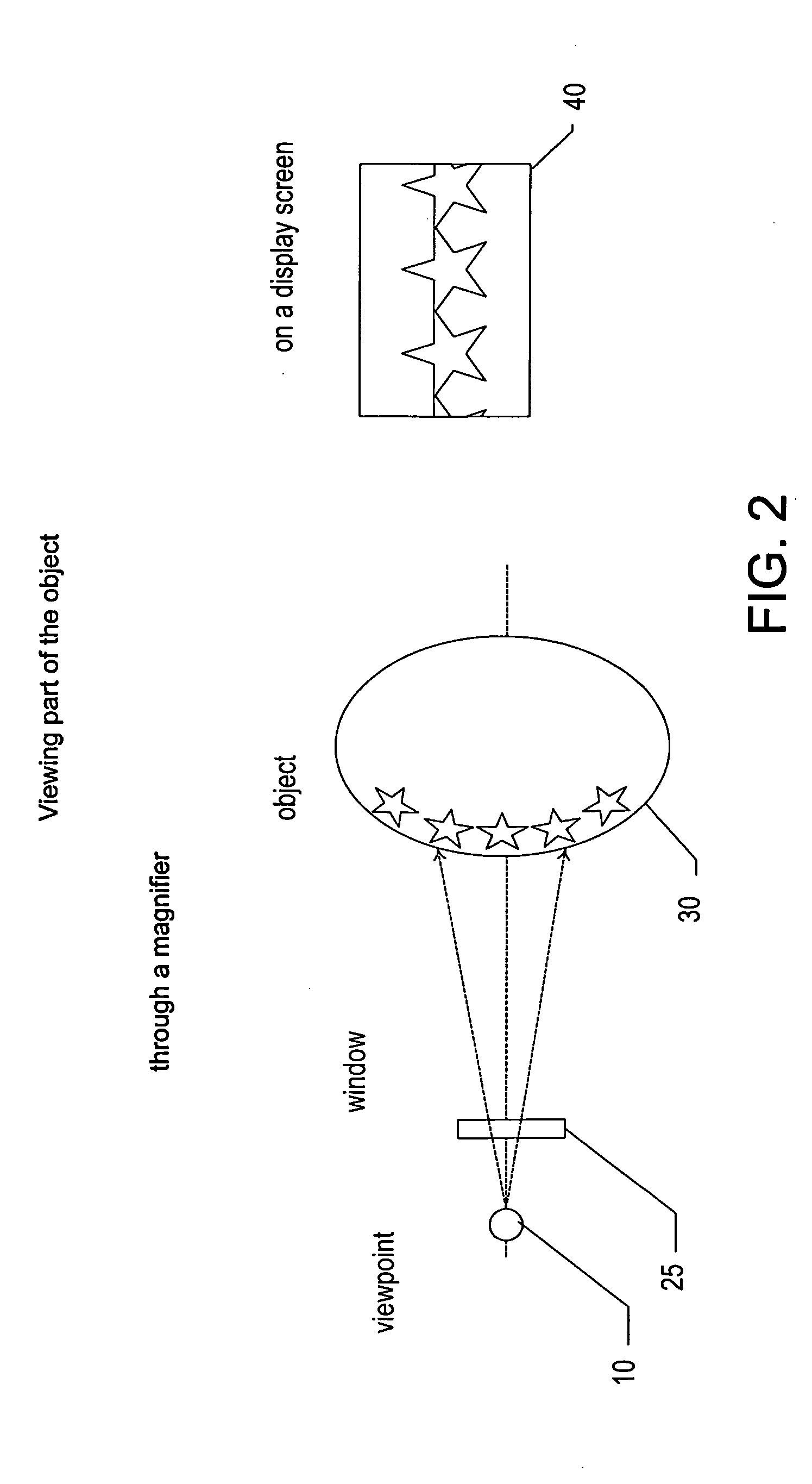Viewing images with tilt control on a hand-held device
a handheld device and tilt control technology, applied in the field of user interfaces for handheld electronic devices with displays, can solve the problems of inability to differentiate between gravitation and inertia, the screen space of hand-held devices is more limited, and the effect of no perspective distortion
- Summary
- Abstract
- Description
- Claims
- Application Information
AI Technical Summary
Benefits of technology
Problems solved by technology
Method used
Image
Examples
first embodiment
[0051]The first embodiment defines a maximum tilt viewing threshold angle, and prevents the display from tilting past this angle. If the user tilts beyond this threshold, and maintains this tilt for a short period of time, the software will initiate and maintain the perspective scrolling effect toward the center point of the user's field of view for as long as the user maintains his tilt beyond the threshold.
second embodiment
[0052]the perspective scrolling effect initiates scrolling before the user reaches the maximum tilt threshold. The velocity of the scrolling effect increases with tilt angle, so the user's view will be stationary when user is looking straight at the image, such that the line of sight to the center his field of view is perpendicular to the image. As the user tilt his device, resulting in a tilted perspective view of the image, the display will start scrolling with a velocity that increases as his tilt angle increases. The result of this effect is that if the user tilts to focus and maintain the center of his field of view on a particular point on the image, the display will gradually re-center his viewpoint over that point, until eventually his line of sight to the point is perpendicular to the image. A software function maps tilt angle to velocity, and this mapping may be linear, but a curved function such as an exponential or geometric mapping will provide a better user experience ...
PUM
 Login to View More
Login to View More Abstract
Description
Claims
Application Information
 Login to View More
Login to View More - R&D
- Intellectual Property
- Life Sciences
- Materials
- Tech Scout
- Unparalleled Data Quality
- Higher Quality Content
- 60% Fewer Hallucinations
Browse by: Latest US Patents, China's latest patents, Technical Efficacy Thesaurus, Application Domain, Technology Topic, Popular Technical Reports.
© 2025 PatSnap. All rights reserved.Legal|Privacy policy|Modern Slavery Act Transparency Statement|Sitemap|About US| Contact US: help@patsnap.com



